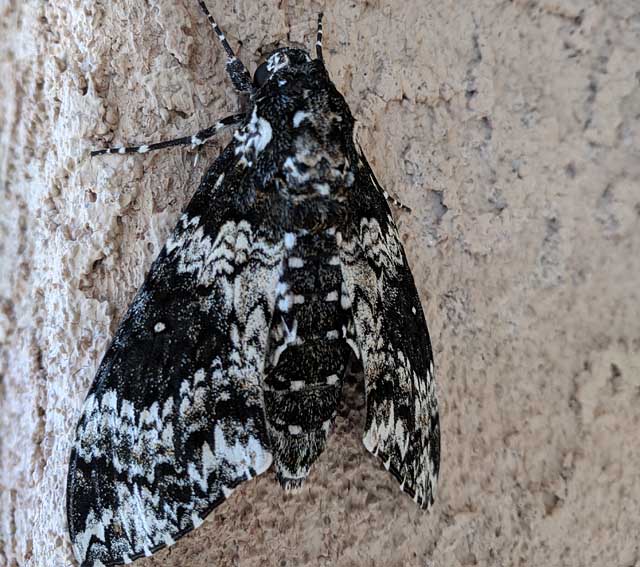Washington County, Utah, and Nearby Counties:
Iron, Garfield, Kane
Sphingidae

|
|
Inspired by and dedicated to Brenda Wagner as per personal communication, (Manduca rustica; June 3, 2019); June 4, 2019 Updated as per James P. Tuttle's The Hawk Moths of North America, June 4, 2019 Updated as per BAMONA, June 4, 2019 |

.
Twenty-three Sphingidae species are listed in the USGS (now BAMONA) for Utah as of June 4, 2019. Not all of the species (only fourteen species are reported by USGS, now BAMONA, in Washington County:A WO" after the species name indicates that I have no confirmed reports of this species in Washington County, but I (William Oehlke) expect that this moth is/may be present. I feel this checklist is also valid for nearby counties in south western Utah: Iron, Garfield and Kane.
Iron: Manduca quinquemaculatus; Sphinx chersis; Sphinx dollii; Pachysphinx modesta; Pachysphinx occidentalis; Paonias myops; Smerinthus cerisyi; Eumorpha achemon; Hemaris thetis; Hyles lineata.
Garfield: Manduca quinquemaculatus; Sphinx chersis; Sphinx dollii; Sphinx vashti; Pachysphinx occidentalis; Hemaris thetis; Hyles lineata.
Kane: Manduca quinquemaculatus; Sagenosoma elsa; Sphinx chersis; Sphinx drupiferarum; Sphinx dollii; Sphinx vashti; Pachysphinx occidentalis; Paonias excaecata; Smerinthus cerisyi; Hemaris thetis; Eumorpha achemon; Euproserpinus wiesti.
Sphinx chersis, Sphinx perelegans and Sphinx vashti are quite similar. Note the dark upper thorax with wide black bars extending to the abdomen on the image of Sphinx perelegans. In Sphinx chersis the entire thorax is uniform light blue-grey with very narrow dark lines.
Sphinx vashti lacks the checkered fringe on the hindwings.
Visit Sphingidae of the Americas to access similar Sphingidae lists (larvae and adult) for all US states and counties, all Canadian provinces, Mexico, all Central and South American countries. For many of the US counties there are larvae thumbnail checklists available via the individual state files.
Visit North American Catocala to access pictoral checklists for Catocala (underwing moths) for all US states and all Canadian provinces.
Sphinginae subfamily
Smerinthini Tribe:
Macroglossinae subfamilyDilophonotini Tribe:
Philampelini Tribe:
Macroglossini Tribe:
|
Eggs of many North American species are offered during the spring and summer. Occasionally summer Actias luna and summer Antheraea polyphemus cocoons are available. Shipping to US destinations is done from with in the US.
Use your browser "Back" button to return to the previous page.
This page is brought to you by Bill Oehlke and the WLSS. Pages are on space rented from Bizland. If you would like to become a "Patron of the Sphingidae Site", contact Bill.
Please send sightings/images to Bill. I will do my best to respond to requests for identification help.
 Show appreciation for this site by clicking on flashing butterfly to the left. The link will take you to a page with links to many insect sites. |